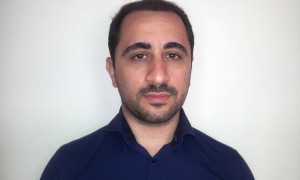Spatializing Invisible Matter
The purpose of this paper is to present and discuss current practices of computational media used for identifying, capturing, and transforming properties of an interior space, providing customized aesthetic environments. One of the challenges presented here is to properly measure and record the invisible matter on atom level that exists all around us, and find methods of manipulating the digital representation either using visualization/sonification processing, or developing new techniques to spatialize the information in the interior space. Therefore, the studies presented here show how sensor technology and custom electronics can provide methods to accomplish effective measurements in real-time by scraping atomic substances and sniffing particles out of thin air, and allow us to extent architectural intelligence to habitats of awareness that enable a full range of imaginative possibilities.
To accomplish these objectives, architecture has to incorporate into its design non-obtrusive systems and devices as a layered sensorial skin that has the ability to understand in greater detail the enclosed space, and to permit access of recorded information to auxiliary computational units for further analysis. With the use of filtering and extraction techniques, raw datasets can be refined either automatically using preset calculations, or set manually from the user using specialized physical or virtual interfaces. In both cases, this network of things intends to support the built-environment with a higher level of understanding on atom level, and transmute matter and energy into reconfigurable parameters for spatio-temporal sonic, and imaging design. The synthesis of the interior then becomes an alchemic reaction that enhances our perception but also allows us to experience a performative space able to be morphed into a playground of creativity and expression.
Stavros Didakis is an associate lecturer in the course BA/BSc Digital Art Technology (Plymouth University) giving lectures and workshops in the areas of creative coding, sensor interfaces, emerging technologies, and digital audio-visual systems. Moreover, Stavros is pursuing a Ph.D. in Media Arts Technology with the Institute of Digital Arts Technology (i-DAT, Plymouth University), and his research focuses on the development of interactive media technologies for sensate and affective architectural spaces. In particular his main research goal is to capture a range of information from inhabitants of domestic environments, and use computational media to analyse and further use these results to attain supportive and personalized interiors. Stavros also works as an installation artist, programmer, and installation engineer and directs a digital media laboratory in Greece (http://www.soniconlab.com). Stavros Didakis is a scholar of Alexander S. Onasis Public Benefit Foundation.
